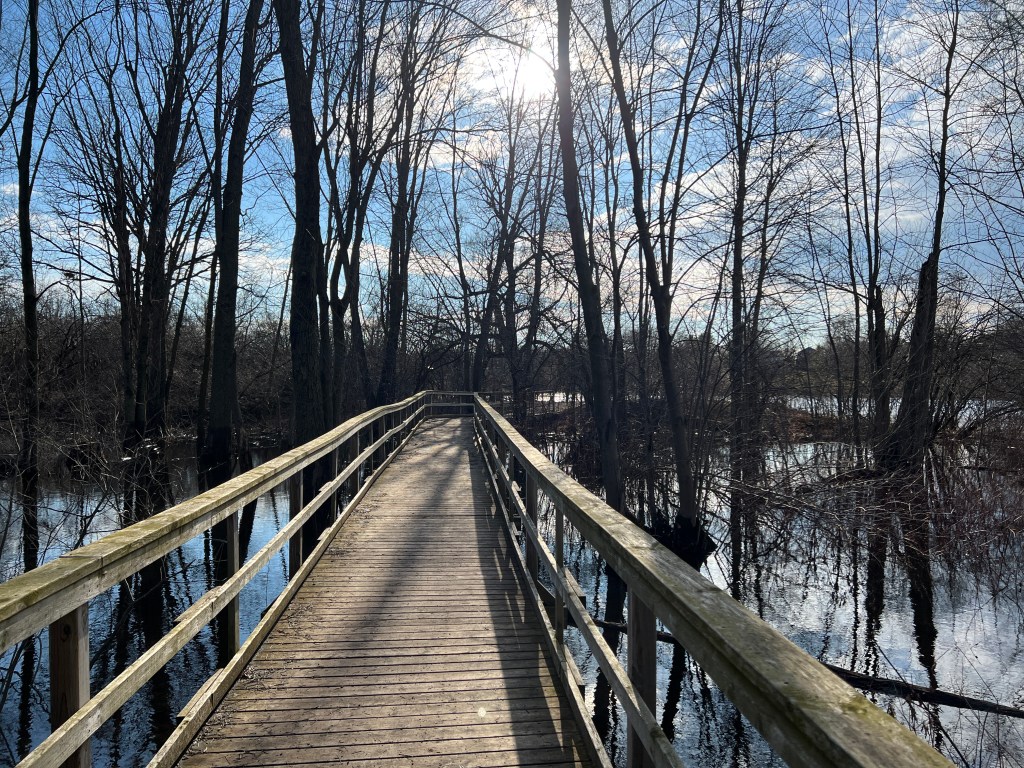
Do you know why we’ve come to associate an Easter egg with a rabbit?
The tradition of the Easter Bunny is a German tradition dating back to the 19th century. German Anglican immigrants to North America brought their myth about an Osterhase who gave gifts of candy and colored eggs to good children. Sort of like a tiny, hairy, Santa Claus.
Then, the Orthodox Church used to have a tradition of fasting from eggs during Lent. So, the colored hard-boiled eggs were used as a way to celebrate breaking the fast on Easter morning.[1]
But, according to a much older tradition, the Easter egg was associated with Mary. After all, Mary Magdalene was the first human being to whom the risen Jesus appeared in the garden outside the empty tomb that first Easter morning.
In Robert Lenz’s icon of Mary[2], Mary Magdalene is pointing with one hand at an egg held in her other hand. She’s staring straight at you with a gaze that pierces straight into your heart.

It’s like she’s saying to you, “Can you not feel it within you, this nudging from God’s Spirit, this tugging of God’s love at your heart? It starts inside of you. How can you not know this?” It is in the heart where love begins to grow. Love expands like the universe. Literally.
In modern cosmology, it is believed that billions of years ago the entire mass of the universe was compressed into a gravitational singularity, the so-called cosmic egg. And from that singularity, the universe has expanded ever since to its current state. And it continues to expand at this very moment we celebrate Easter and shout, “Alleluia! Christ is risen indeed!”
How does the new day start? The new day starts by going from inside to outside. Whether it’s clambering out of a tent as the sun rises over a pristine campground lake. Whether it’s stepping out of your house to go to work. New life begins inside and moves from there to the outside. The new day, the new thing is marked by expansion. Could love be calling us out again this Easter?
We speak of a mother’s love which, physiologically, starts within her. I read a marvellous description about this from Meggan Watterson’s book about Mary; she writes, “All the eggs a woman will ever carry, form in her ovaries when she’s a four-month-old fetus in the womb of her mother. This means, our cellular life as an egg begins in the womb of our grandmother. Each of us spend five months in our grandmother’s womb.” New life and new love, to say the least, begin inside of us.
There’s more to this tradition about Mary and her egg. A legend that few know about.
“The Eastern Orthodox tradition holds that after the resurrection, Mary Magdalene traveled to Rome, where she was admitted to the court of Tiberius Caesar because of her high social standing. She told the court the story of her love for Christ, and how poorly justice was served under Pontius Pilate during Christ’s trial. She told Caesar that Christ had risen. And to help explain his resurrection, supposedly, she took an egg from off of the feast laid out before them, and said:
“An egg, like a seed, contains the end at the beginning. The seed already has the bloom held within it. The egg holds safely inside whatever new life its precariously fragile shell is meant to protect. And if that new life is going to emerge, it has to come from within.
“You can’t break a shell and still expect a little beak to one day peck its way out and into the world. You have to let that tiny creature with wings within the shell arrive at the day of its own birth. You have to remain in this trusting, quiet unknown, as every mother or artist knows, and let that life declare its existence not when your ego says it’s time, but when that new life is ready.”
A person, like an egg, has life, has spirit, a true self. Sometimes we’ve called it the soul. Inside of us is this seed, the presence of God in spirit. And this life waits to emerge from the womb, the dark within. This life is there at the beginning and at the end.
Birth is meant to happen before we die. Ideally, many times over. But we have to die to our ego compulsive ways of thinking and doing. We have to have Good Friday before Easter, to let new life emerge over and over again. This inner spirit is all we are when we come into this world and it’s all that we’ll be when we leave it.
And what brings this new life to come out is love. It’s the only way new life happens. Without love, none of this is possible.
“Then, according to legend, Caesar was like, ‘Hah, yeah, right. A person can no more resurrect than that egg in your hand turn red.’”
And the egg immediately turned red.
And that’s why I would say we have coloured eggs at Easter: To remind ourselves that with God anything is possible, even bringing new life to a situation, a person, the earth, a church that appears to have died of all hope and promise. That’s resurrection. That’s Easter.
The resurrection of Jesus says that God has the last word. Easter reveals that there are no dead ends, that ultimately nothing is going to end in tragedy and crucifixion. Yes, when we look around us into history and in our daily lives in the moment it seems that it can’t be true; like Caesar we say, “Hah, yeah, right. A person can no more resurrect than that egg in your hand turn red.”
And yet, ever and again, here and there, more than we expect, new life breaks forth, when we are willing to notice and see new life as if for the first time.
Love is what opens our hearts and minds to see new life. New life begins with a newfound love, coming from our hearts and expanding towards ourselves and for God, for others, the earth and all that is in it. God’s gift of love gave Jesus to us. And God’s gift of love finally brings us back to life this Easter.
“The power and glory are yours, now and forever. Amen!”
Christ is risen! Christ is risen indeed! Alleluia!
[1] Paragraphs in this sermon are cited directly from Meggan Watterson, Mary Magdalene Revealed: The First Apostle, Her Feminist Gospel & The Christianity We Haven’t Tried Yet (New York: Hay House Inc, 2019), pp. 98-100.
[2] Read about Robert Lenz’ icon of Mary Magdalene here: https://www.patheos.com/blogs/anxiousbench/2013/07/the-icon-of-the-magdalene/


